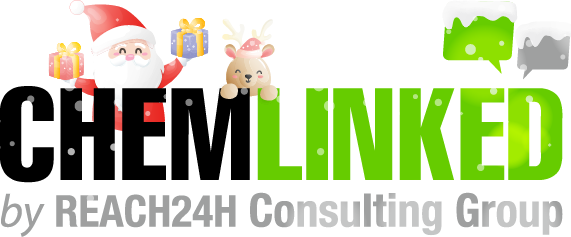How to Sell OTC Drugs to China via Cross-Border E-Commerce (CBEC)
To market over-the-counter (OTC) drugs in China, stakeholders used to obey the same documentation requirements and marketing authorization application procedures as prescription drugs.
*Please refer to the article to learn about OTC drug marketing authorization application procedures in China.
In recent years, cross-border e-commerce has been developing as a different approach to enter China’s OTC drug market. Cross-border e-commerce (CBEC) refers to selling goods on a third-party online CBEC platform from one country to individual consumers in another country.
Contents
- China’s OTC Drug Market Overview
- Differences Between CBEC and General Trade
- CBEC Positive List
- Three Delivery Modes for CBEC
- How to Establish an Online Drugstore on a Chinese CBEC Platform
- BaiPharm’s CBEC Service for Overseas Medical Suppliers
Related Webinar

Webinar: How to Sell OTC Drugs to China via Cross-Border E-Commerce
1. China’s OTC Drug Market Overview
OTC drugs in the Chinese market mainly include cold drugs, cough drugs, pain relievers, gastrointestinal prokinetic drugs, gastric antacids, vitamins, anthelmintics, tonics, constipation drugs, drugs for external use, contraceptives, skin care drugs, etc.
China’s OTC Drug Catalog, released by National Medical Products Administration (NMPA), currently covers over 5,000 drugs. The catalog occasionally changes as NMPA sometimes makes Rx-to-OTC switches and vice versa based on the monitoring and evaluation of relevant drugs.
China’s huge OTC drug market scored a revenue of 109.22 billion yuan (circa US$17.13 billion) in 2020. In 2021, 140 OTC drugs (79 traditional Chinese medicines and 61 chemical drugs) were each estimated to have a revenue of over 100 million yuan. The top five best-selling chemical OTC drugs’ therapeutic areas were
① Gastrointestinal system & metabolism
② Skin diseases
③ Respiratory system
④ Genitourinary system & sex hormones
⑤ Sensory system.
Due to the aging population and the stronger awareness of healthcare, the OTC drug sector is gaining momentum. According to Market Data Forecast, the Chinese OTC market is predicted to reach US$26.35 billion by the end of 2027.
2. Differences Between CBEC and General Trade
To market OTC drugs in China, some companies choose CBEC instead of general trade. A major reason is that CBEC’s takes a shorter time for market access. OTC drugs sold to Chinese consumers via CBEC do not need to go through China’s time-consuming and costly marketing authorization procedures. CBEC only takes 2-3 months, mainly spent on appointing a Chinese agency, filing records at Chinese customs, choosing Chinese CBEC platforms to set up online stores, etc.
| Comparison Between the General Trade and CBEC | ||
| General Trade | Cross-Border E-Commerce (CBEC) | |
| China’s Marketing Authorization | Mandatory | Not mandatory for OTC drugs transported via C2C direct mail mode;
Already obtained for OTC drugs transported via B2B2C bonded warehouse model or B2C direct mail mode |
| Market Access Period | 2-3 years (clinical trials not required);
4-5 years (clinical trials required) |
2-3 months |
| Sales Channel | Hospitals, drugstores, supermarkets (Category II OTC drugs only), Chinese domestic online sales platforms, such as www.jianke.com | Chinese CBEC platforms |
| Responsibility Entity | Marketing authorization holder (MAH) as the main responsibility entity; MAH’s agency taking joint liability | Seller and the CBEC platform as direct responsibility bearers |
| Payment | Partly covered by national medical insurance, while partly paid by the patient | Paid by the customer |
| Delivery | Domestic delivery | Delivered via Chinese bonded warehouses, or directly from overseas |
| Limit | – | For personal use only; prohibited to be sold again |
3. CBEC Positive List
It is noteworthy that China’s government regulates a list of products that are permitted to be imported into China via CBEC, which is named as List of Imported Retail Goods for Cross-border E-commerce. First issued in 2016, the latest 2022 edition of the list includes 8 categories of medical products, such as traditional Chinese medicinal liquor and cooling balm.
| Medical Products in the List of Imported Retail Goods for Cross-border E-commerce (The list was expanded in 2019 and adjusted in 2022. The current 2022 version has been effective since March 1, 2022) | ||
| Tariff Code | Goods | Notes |
| 30049051 | Traditional Chinese medicinal liquor (mixed or non-mixed; for preventing or treating diseases; with prescribed dose or retail packages) | Except the species commodity that is listed in the Catalog of Wild Fauna and Flora Commodities for Import/Export and can’t provide the certificate issued by the Endangered Species Import and Export Management Office of the PRC to prove the commodity is not listed in the aforementioned catalog |
| 30049054 | Cooling Balm (Qing Liang You) (mixed or non-mixed; for preventing or treating diseases; with prescribed dose or retail packages) | / |
| 30051010 | Plaster bandage (having been immersed in or applied with drugs, with retail packages for medical use in surgery/ dentistry, or by veterinarian) | / |
| 30051090 | Other adhesive dressings, or objects with adhesive coating (having been immersed in or applied with drugs, with retail packages for medical use in surgery/dentistry, or by veterinarian) | / |
| 30059010 | Absorbent cotton, gauze, and bandage (having been immersed in or applied with drugs, with retail packages for medical use in surgery/dentistry, or by veterinarian) | |
| 30059090 | Other soft medical filler or similar objects (having been immersed in or applied with drugs, with retail packages for medical use in surgery/dentistry, or by veterinarian) | Except the goods regulated as medical devices |
| 30061000 | Sterile surgical catgut;
sterile ecklonia kurome, sterile adhesive plaster, sterile absorbent hemostatic material, sterile anti-adhesion barrier material for surgery or dentistry use, or other similar sterile materials |
Except the goods regulated as medical devices |
| 30067000 | Gel products for human use or veterinary medicines (as an emollient between different body parts during surgery or physical examination, or as a coupling agent between body and medical device) | Except the goods regulated as medical devices |
*Notes:
- Overseas Marketing authorization: OTC drugs imported via CBEC to China must have overseas marketing authorization.
- OTC status in China: If a drug is listed as an OTC drug in a foreign country/region, but as a prescription drug in China, such a drug cannot be imported via CBEC to China.
- Classification of OTC products: If a product is an OTC drug according to overseas classification, but an OTC cosmetic or health product according to China’s classification, then the Chinese classification shall prevail for CBEC imports.
- China NMPA’s marketing authorization is not mandatory for drugs qualified to be imported via CBEC. Exception: OTC drugs approved to be imported under Beijing’s or Henan’s CBEC pilot programs already have NMPA’s marketing authorization.
- Commodities imported via CBEC into China are for personal use only and cannot be sold again.
4. Three Delivery Modes for CBEC
Contact Us
With our experts across China, Japan, South Korea, the United States, and Europe, BaiPharm is fully qualified to engage in complex market entry projects of finished drugs, APIs, excipients, and packaging materials for most key markets.
If you have any questions about pharmaceutical regulatory compliance in China, please feel free to contact us.
Tel: +86 (0)571 8710 3829
Email: customer@reach24h.com




